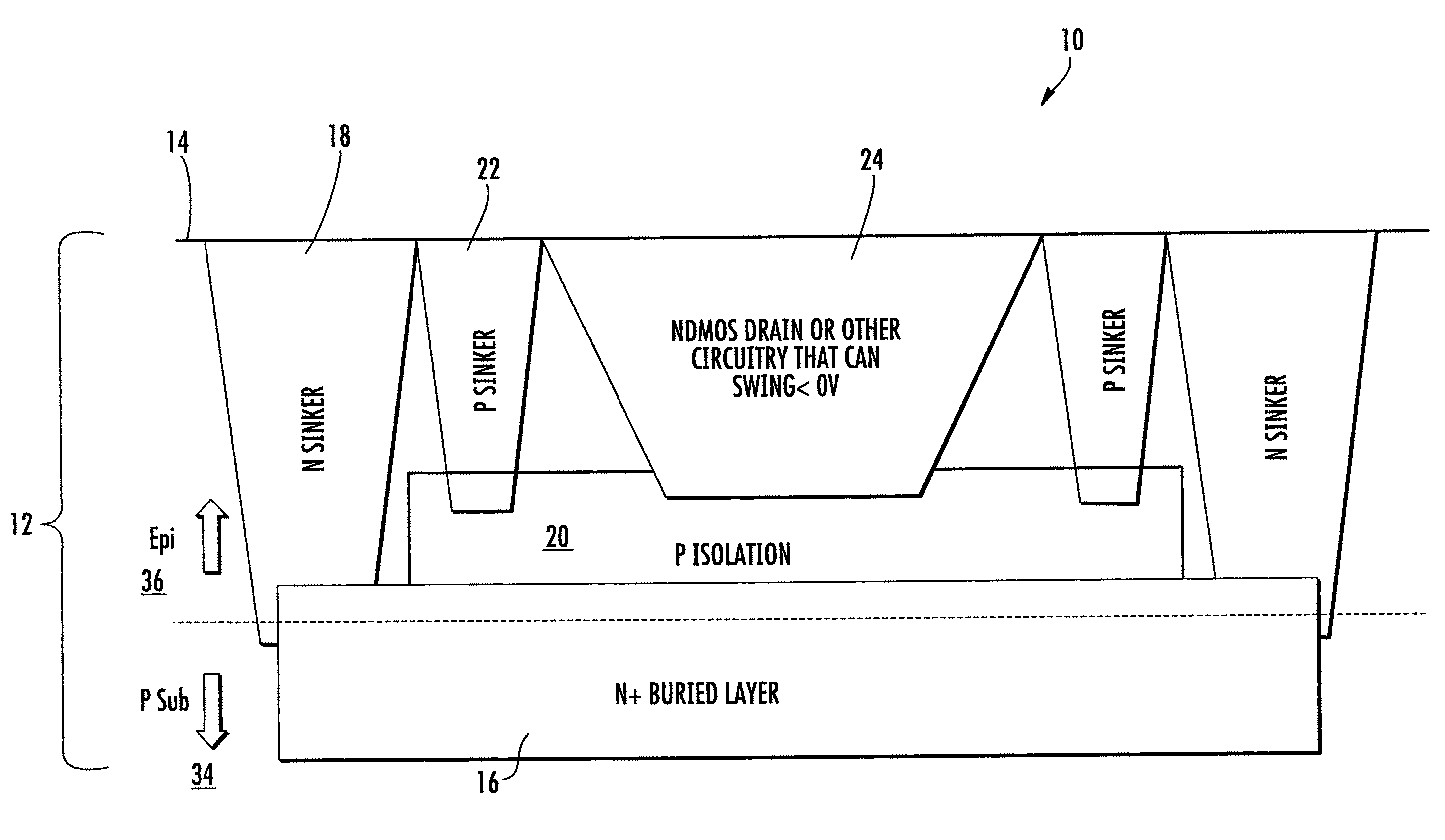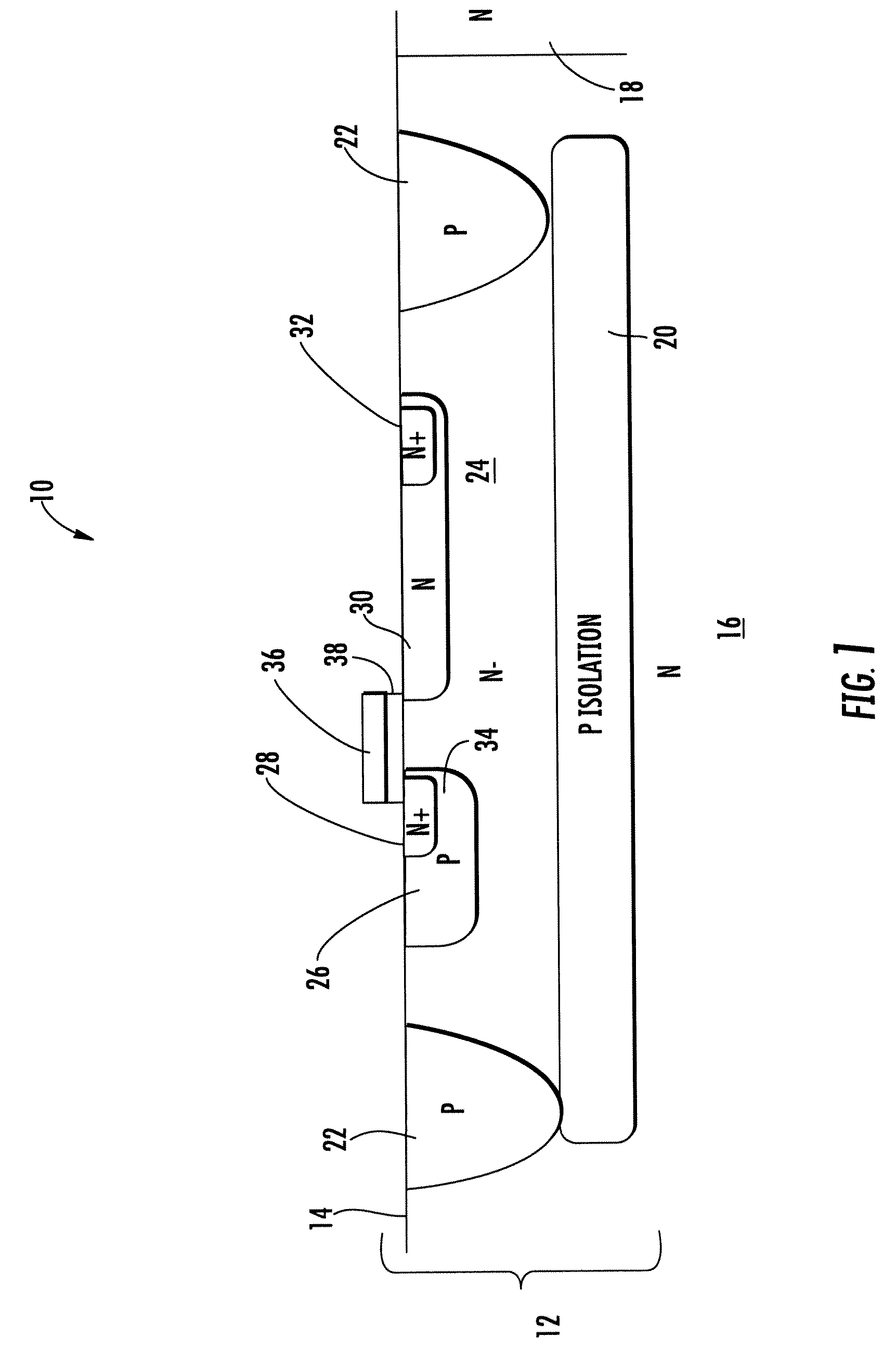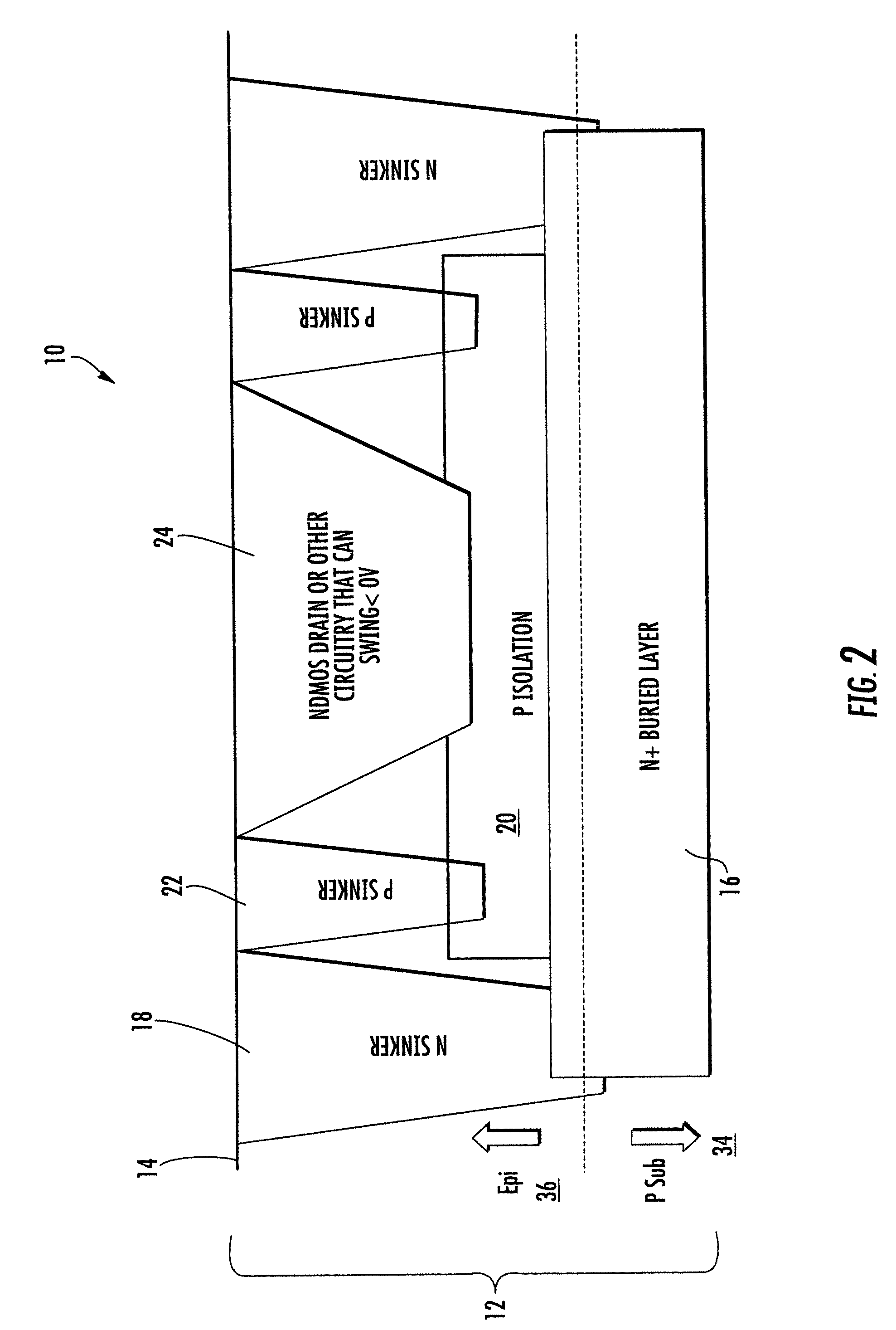Buried Isolation Layer
a technology of isolation layer and buried junction, which is applied in the direction of semiconductor devices, electrical apparatus, transistors, etc., can solve the problems of increasing undesirable side diffusion, affecting device performance,
- Summary
- Abstract
- Description
- Claims
- Application Information
AI Technical Summary
Benefits of technology
Problems solved by technology
Method used
Image
Examples
Embodiment Construction
[0016]An integrated circuit 10 of FIGS. 1 through 3 includes a substrate 12 having an N-buried layer 16 with an abutting P isolation layer 20. In FIG. 2, the substrate 12 includes a substrate 34 with an epitaxial layer 36. P contact regions 22 extends from the surface 14 of the substrate down to the P isolation layer 20. In FIGS. 1 and 2, an N contact region 18 extends from the surface 14 of the substrate down to the N buried layer 16. In FIG. 3, the contact to the N buried layer 16 is not shown. The N type device region 24 in FIGS. 1 and 2 and region 42 in FIG. 3 extend from the top surface 14 above the buried P region 20.
[0017]In all embodiments, the P isolation region 20 impurity is indium entirely or partially with some boron. The diffusion coefficient of indium is only about 0.25 that of boron at a given temperature. Consequently up diffusion is significantly reduced. This allows build devices with reduced foot print or die space. Although at least 50% indium is a targeted rang...
PUM
 Login to View More
Login to View More Abstract
Description
Claims
Application Information
 Login to View More
Login to View More - R&D
- Intellectual Property
- Life Sciences
- Materials
- Tech Scout
- Unparalleled Data Quality
- Higher Quality Content
- 60% Fewer Hallucinations
Browse by: Latest US Patents, China's latest patents, Technical Efficacy Thesaurus, Application Domain, Technology Topic, Popular Technical Reports.
© 2025 PatSnap. All rights reserved.Legal|Privacy policy|Modern Slavery Act Transparency Statement|Sitemap|About US| Contact US: help@patsnap.com



